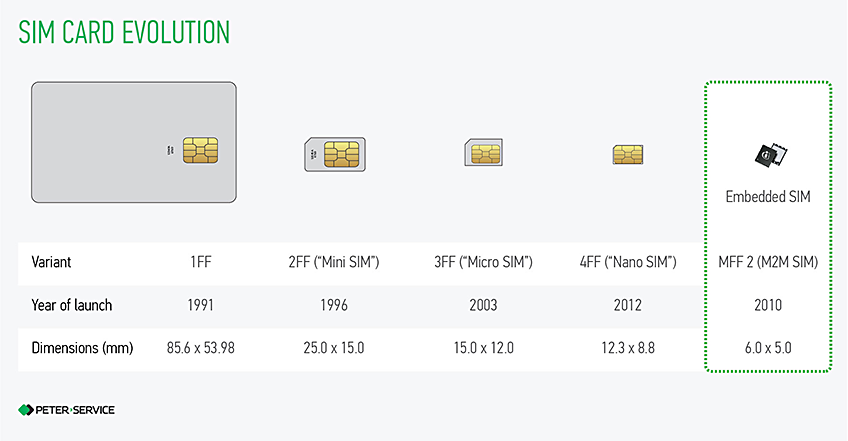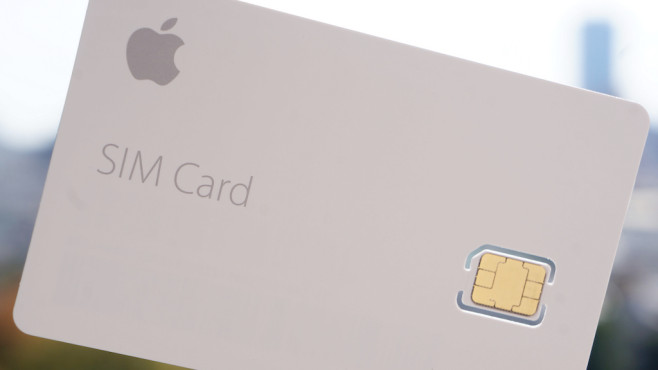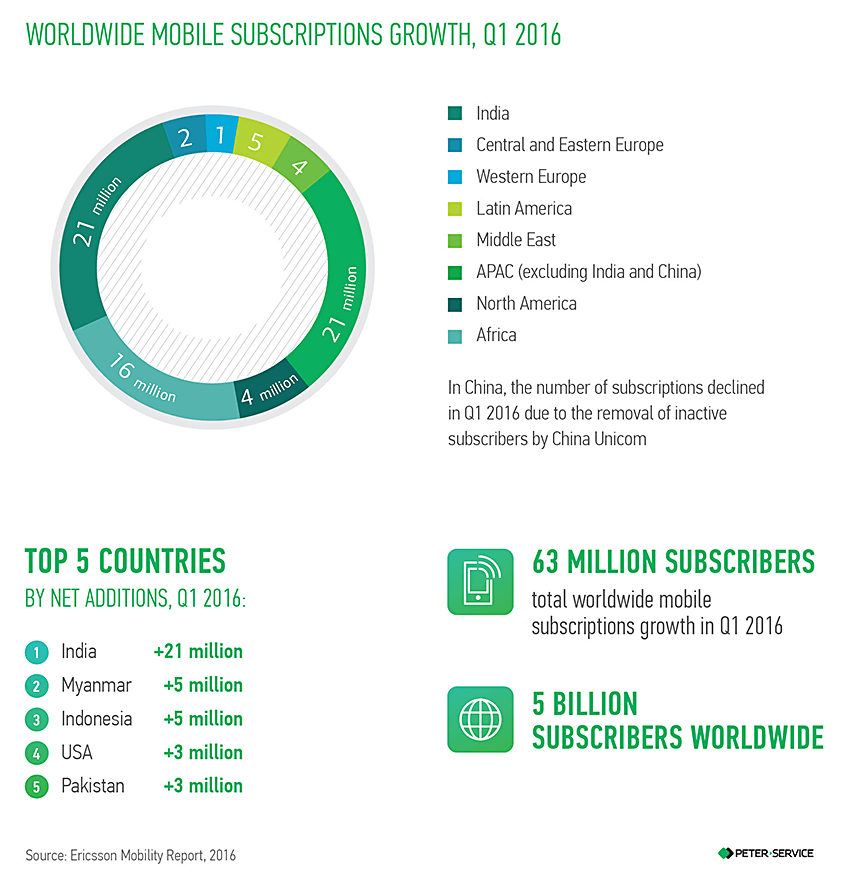Mobile subscribers without SIM cards
Our radiant future?
In the recent 25 years, SIM card has become a universal symbol of mobile connectivity. It is hard to imagine how subscribers and operators will be able to do without them. However, a whole bunch of interesting concepts emerged several years ago – from a switch to embedded SIM to a complete abandonment of SIM cards. In this article, we are figuring out how operators' and subscribers' attitude to SIM cards may change in the immediate future.
The path behind SIM cards
In its early times, a SIM card was a plastic card with a chip which had the same size as an ordinary bank card. And unsurprisingly so, since it was decided to produce SIM cards using the UICC standard, which governs all smart cards in the world including bank cards, contactless transport passes and many other electronic media responsible for user identification.
The dimensions of first phones made it fairly easy to hide a card of this size (8.6 by 5.4 cm) inside. But phones' size began to shrink rapidly and the world switched SIM sizes we are used to (in fact, officially named Mini-SIM).

As early as in the 2000s, SIM cards got even smaller, as the market started shifting from keyboard phones to smartphones and tablets, which were more sophisticated devices with diverse features. Inside, free space was definitely scarce and further miniaturization of subscriber cards became inevitable.
Besides user devices, M2M devices for business began infiltrating the market in the 2000s. Here, the issues of SIM size and durability became even hotter. With this in mind, it was the B2B market which was the first to come up with an idea of embedded SIM cards designed as a surface-mounted device instead of the card form factor.
Why SIM cards are needed at all?
If you question why subscribers need SIM cards, the answer will be – "for identification and authentication".
- Identification means a simple confirmation of its number by a SIM card
- Authentication is a more complicated process involving a SIM card sending secret keys to confirm its authenticity
Only when the CSP receives information about the subscriber he is dealing with, do other communication service functions kick in for the user: it identifies the location of the nearest base station, the number of available minutes on balance, available discounts and tariff options.
Is it possible to use devices other than SIM cards for identification and authentication?
Yes, indeed, the M2M segment is already actively using Embedded SIM, or eSIM. The SIM functions are performed by a separate chip inside the phone. Further on the agenda is the spread of devices with embedded SIMs including the introduction of tablets and smartphones for which buying a SIM card will no longer be necessary.
In theory, it is possible to abandon physical SIM, a SIM card or an eSIM, altogether. All identification and authenticity verification functions will be performed through software features. This technology was dubbed Soft SIM. To process data, a Soft SIM can directly utilize the CPU, instead of a dedicated chip like in the case of eSIM. But so far, we have not seen a single commercial launch of Soft SIM – CSPs are being rather skeptical about the perspective of transferring the entire secure function from a dedicated element to software. Their concerns are understandable, because such a system is far less secure than the existing physical/software SIM bundle. This is why, for now, eSIM appears to be the only alternative to traditional SIM cards.
SIM cards: pros and cons
Using SIM cards has its advantages, but also some gaps to it. Its apparent pros include the possibility of any subscriber to port his number from one phone to another just by removing the SIM card from one device and installing it in the other.
But if it's necessary to change the service provider, then you will have to discard the older SIM card and buy a new one. The procedure is the same, even if the subscriber decided to use Mobile Number Portability.
In the case of eSIM, subscribers do not have to change the SIM card – an operator can be selected through the phone's menu. This functionality is exactly what concern operators, because their current business strategy is designed to manage subscriber base by SIM card distribution: to do that, operators open their salons, brand their SIM cards, and then SIM cards work to retain the operator's base.
eSIM advantages
As was noted above, the key advantage is that embedded SIM enables selection of operators through the phone menu. This means a subscriber can buy a phone and then choose an operator himself (or with the help of the phone retailer). Operators' sales salons drop out of this scheme, which will give a significant advantage to those that do not have or have fewer salons than competitors.
Operators will have to compete only in advertising or digital marketing. Furthermore, device manufacturers will be able to significantly impact the subscriber's choice (e.g. they can completely remove some operators from the list or otherwise move a specific operator up to the top).
Along with initial connection to cellular services, any transfers to new operators also become easier while using the device. A subscriber can switch operators within one day with just one click. This can be convenient if he regularly changes locations in which the two operators have different coverage capabilities: he can use the service of the first operator in one location and the service of the second operator in the other.
International trips will also become easier. Right on arrival at a new place, it will be possible to connect to one of local operators that should appear in your phone's menu and avoid roaming.
Embeded SIM will also help better protect your device from crooks. Today, after stealing a subscriber's phone robbers can simply throw away his SIM card and insert a new one of their own. This trick will not work with an embedded SIM: the subscriber will be able to block the eSIM in case of emergency, and robbers will be unable to use the looted phone.
When can we expect the demise of SIM cards?
The decision on a complete phase-out of SIM cards is yet to be made. Only M2M devices are gradually switching to embedded SIM card – the eSIM standard has been developed with a primary focus on them.
For some time before there had been gossiping that eSIM will be one of the new features to appear in Apple iPhone7. But, finally, the phone was released without this option.
Anyway, major manufacturers are already thinking of intermediate scenarios between current SIM cards and entirely embedded SIM cards. Again, Apple's iPad family devices are already offering a successful support of Apple SIM.

Apple SIM is an external SIM card that can be swapped across devices. But the selection of operators is done inside the menu. Subscribers can buy Apple SIM for their iPad in more than 140 countries. Apple can possibly extend the Apple SIM support to its other devices, e.g. Apple Watch, and, further, to smartphones.
Analysts forecast that in 5 years from 20 to 40 percent of sold mobile devices will be equipped with embedded SIM cards. According to a study by Smart Insights, by 2020 the total sales of smartphones supporting eSIM will reach from 346 to 864 million devices. By the same period the sales of SIM cards may decrease by 16 percent.
What countries will be the first to welcome eSIM?
Embedded SIM cards are seeing more active support of manufacturers and operators working in developed markets. Despite possible risks, operators in Europe and USA have a bunch of ways to retain subscribers – from triple- and quadruple-play, when it is cheaper to buy all services from one provider, to selling devices on an installment plan with a binding contract. For these cases, it is not really important whether the operator has its own SIM cards or the subscriber is using an embedded SIM card.
Developing markets are a completely different story: 90 percent of subscriber base there are using prepaid rate plan and the BYOD (bring your own device) approach is dominating there. However, these markets are seeing the largest growth in mobile users globally.

Operators there compete for customers more actively. But device manufacturers have their own strengths – they can overtake the cellular network market thanks to the spread of embedded SIM cards. We shouldn't forget that exactly in such countries as India and China, devices with 2, 3 and even 4 SIM cards are customers' top choices. For them, using eSIM devices could be far more convenient being able to switch operators inside the menu.
SIM cards are still moving forward
Despite the perspective to be moved to the edge of history, SIM cards are remaining the main subscriber identification method.
They are more likely to evolve, rather than completely disappear. They are still being actively developed. Along with shrinking dimensions, SIM cards are getting cluttered with new functions. Modern SIM cards have an embedded NFC module that enhances the experience of both subscribers and operators as it enables making purchases and using SIM cards as tickets and passes. Gradually, more modern features can become an essential part of SIM cards.
Will manufacturers sometime abandon SIM cards once and for all in favor of eSIM and Soft SIM? Well, it's something that remains to be seen.
Stay connected!